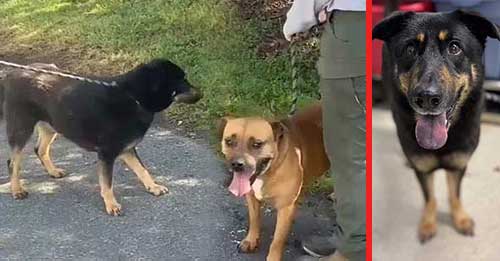A dog was discarded at a North Carolina animal shelter after his owners branded him gay for humping another male dog. The dog, named Fezco, is 50 lbs and four to five years old. The shelter is now asking for volunteers who can house Fezco until he is adopted after his owners saw him acting in ways that they don’t accept.
Fezco, whose breed is unidentified, is friendly and likes other people and animals. It is uncertain if Fezco has been adopted as of today.
According to American popular science magazine, homosexual behaviour has been noted in over 1,500 animal species. Animals that have been observed engaging in same-sex sexual behaviour include elephants, giraffes, dolphins, penguins, Japanese macaque monkeys and lions.
Most study into same-sex associations in animals defines the practice as an ‘evolutionary paradox,’ since it doesn’t help the animal breed not does it directly contribute to the survival of the species.
But biologists Nathan W. Bailey and Marlene Zuk from the University of California, Riverside found some benefits in the practice.
According to a popular science magazine, for example, their studies of the Laysan albatross show that female-female coupling can surge fitness by taking benefit of the excess of females and shortage of males in the population and provide larger care for offspring. Moreover, same-sex coupling in many species actually eases the likelihood of divorce and limits the pressure on the opposite sex by allowing members to display more flexibility to form partnerships, which in turn reinforces social bonds and decreases rivalry.
Of late, researchers are moving away from the idea that same-sex conduct in animals is abnormal or that it developed independently in each species.
Several researchers have asked what if same-sex sexual conducts have been around since animals began to engage in sexual behaviours of any kind? In their theory, the inherited animal species mated extensively with regard to sex, i.e., they mated with individuals of all sexes, if only because it is doubtful that the other traits required recognizing a well-matched mate-differences in size, shape, colour, for example – progressed at precisely the same time as sexual behaviours.






